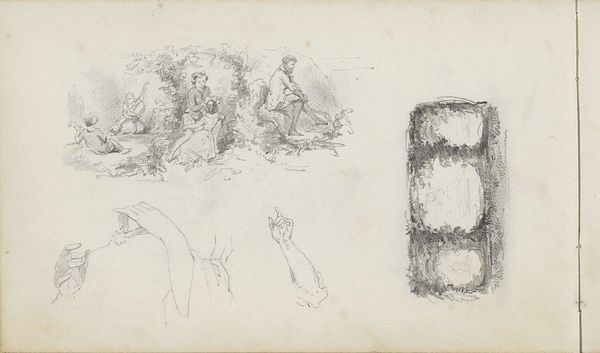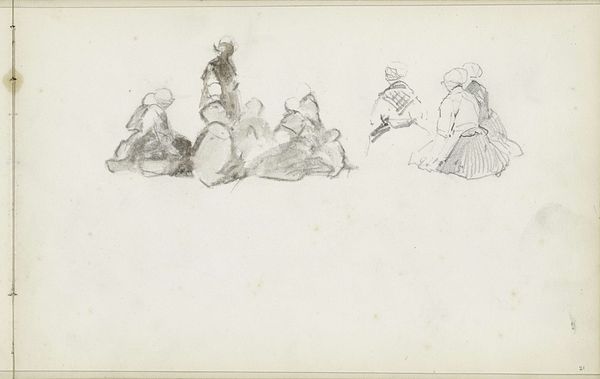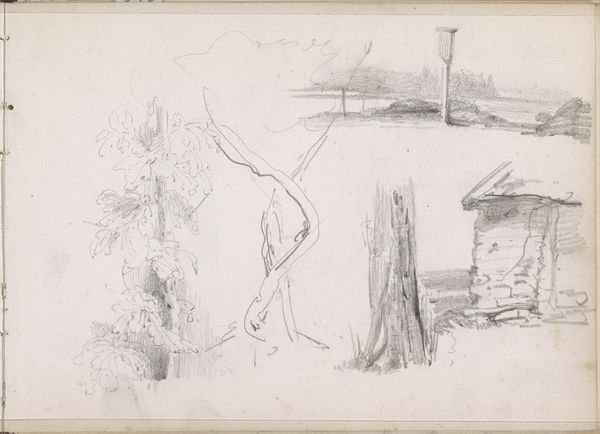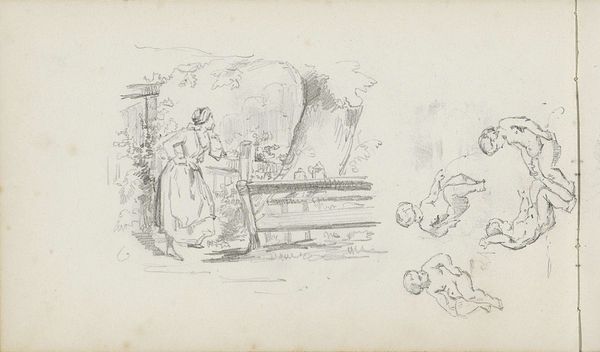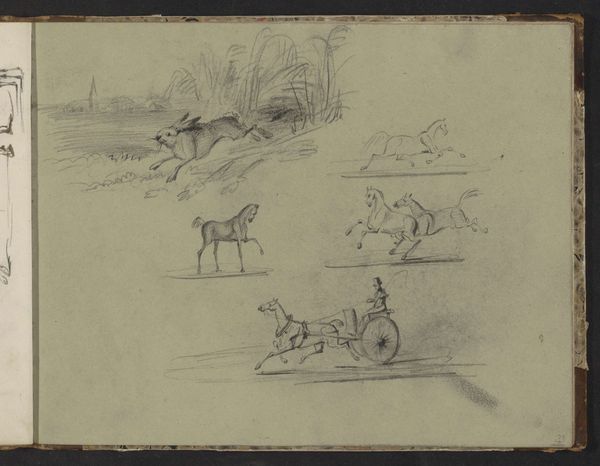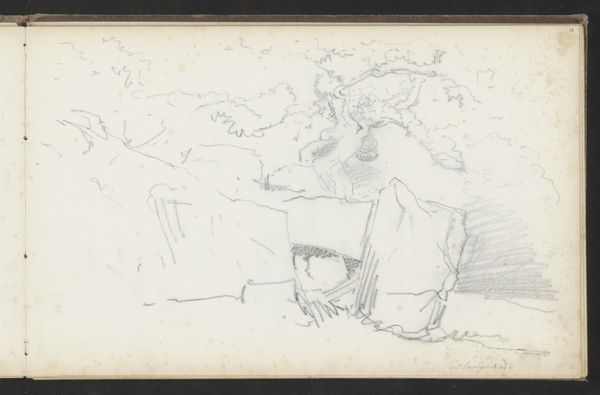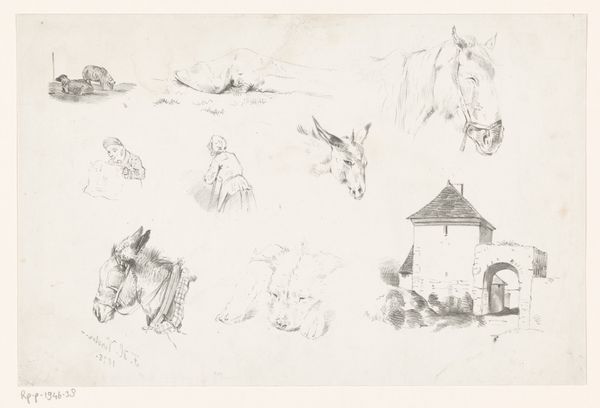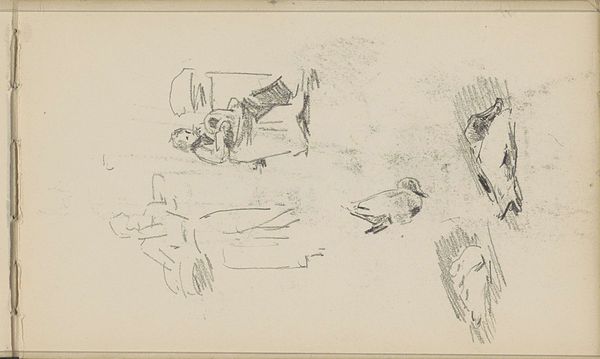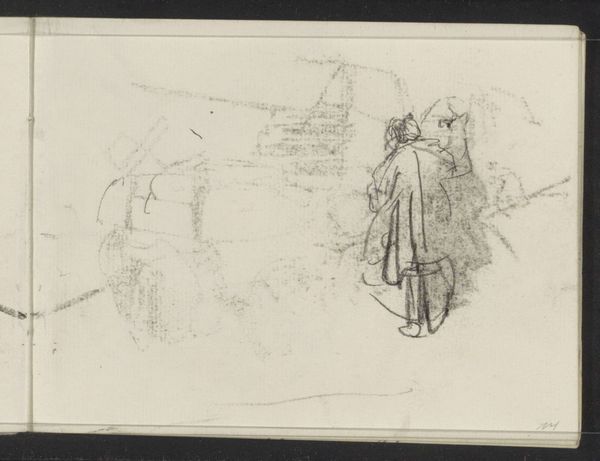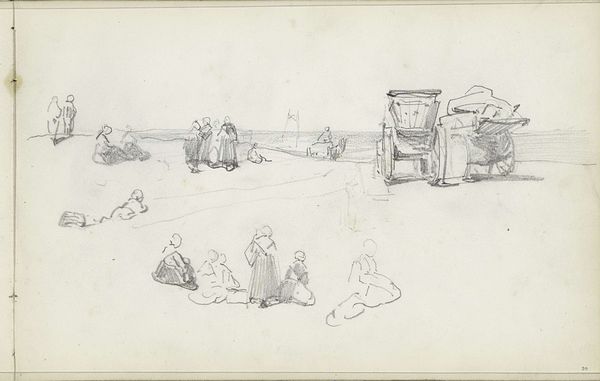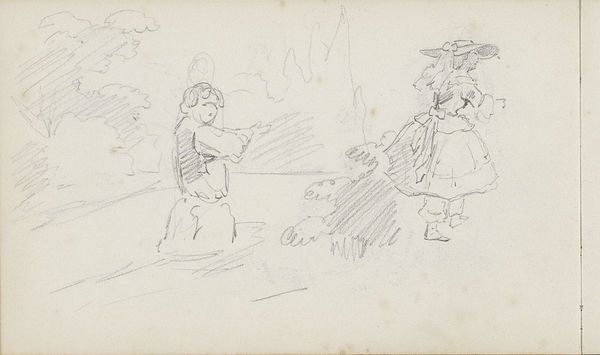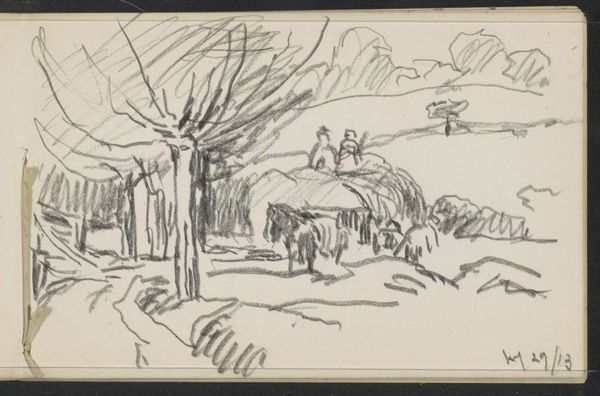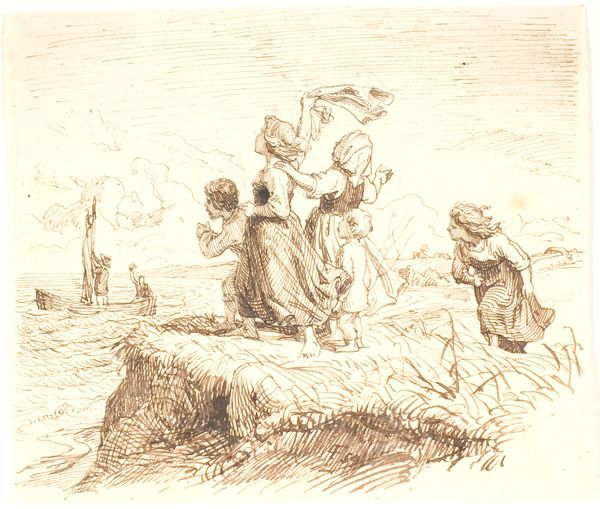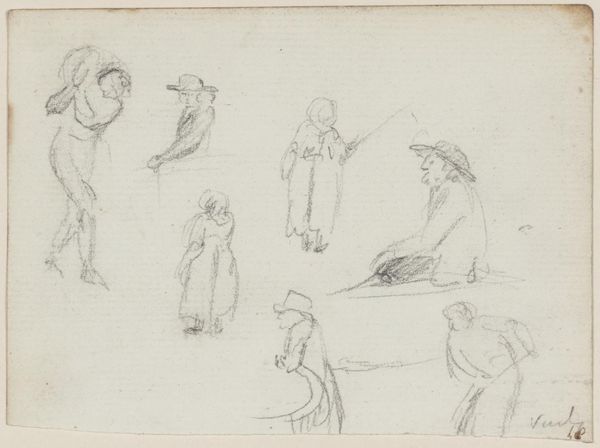
drawing, paper, dry-media, pencil
#
portrait
#
drawing
#
light pencil work
#
pencil sketch
#
incomplete sketchy
#
landscape
#
paper
#
dry-media
#
personal sketchbook
#
idea generation sketch
#
sketchwork
#
pen-ink sketch
#
pencil
#
sketchbook drawing
#
sketchbook art
#
realism
#
initial sketch
Copyright: Rijks Museum: Open Domain
Curator: Welcome. We’re looking at "Studieblad, onder andere met koeien, een kip en een boerin" a study sheet attributed to Maria Vos, dating sometime between 1834 and 1906. It's currently held at the Rijksmuseum. Editor: The initial impression is quite striking; there’s a beautiful lightness in the pencil work that feels very immediate, almost ephemeral. Curator: Vos's choice to depict rural subjects is really telling, isn't it? This was a time of increasing industrialization; images of the countryside served as both an idyllic escape and as a testament to a vanishing way of life. The depiction of the female figure, perhaps a farmer's wife or a milkmaid, engages themes of labor and gender roles. Editor: From a structural point of view, the loose arrangement of the subjects across the page, seemingly disconnected, creates a compelling rhythm. Notice how the cows at the top lead your eye down to the woman in the center, then to the chicken. There's no vanishing point. Curator: The animals serve as more than mere pictorial elements; they ground us in the agricultural realities of the era, a counterpoint to the increasingly abstract and disconnected experience of modern urban life. The sketchbook feel gives the idea that this female figure probably lived within the location Vos worked in. Editor: True. Also, note how Vos masterfully uses varying pressure in the pencil strokes to suggest form and depth despite the drawing's overall lightness. It's not just representation; it's an exploration of tonal values within a monochromatic scheme. The way she renders light is quite evocative. Curator: Exactly. I read this sketch also through the lens of socio-economic realities. The detailed study suggests an empathetic approach to the everyday life and labor within agricultural work. These are people whose stories are often overshadowed or misrepresented. This makes this even more interesting when looking through contemporary theories. Editor: Yes. What I take from this study is something different though. It's this feeling of process, of an artist thinking through form, composition, and the very act of seeing. Curator: I think understanding the intersection between artistic intention and socio-cultural impact will guide you well while exploring Vos' work. Editor: And perhaps analyzing the artist's methodology as we trace those intersecting narratives. Thanks.
Comments
No comments
Be the first to comment and join the conversation on the ultimate creative platform.
